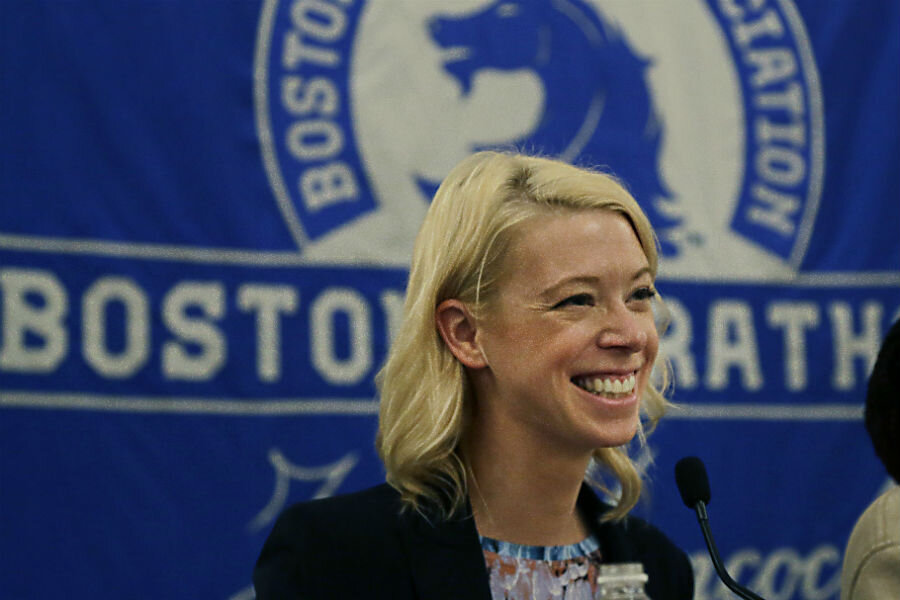Running the 2016 Boston Marathon on one leg
Loading...
[UPDATE: Adrianne Haslet finished the race at about 7:15 p.m. Monday. Patrick Downes completed the course in 5 hours, 56 minutes, 46 seconds.]
More than 30,000 runners crossed the starting line in Hopkinton, Mass. on Monday morning for the iconic 26.2-mile race to Boston's Back Bay neighborhood. Among the 120th Boston Marathon runners was 35-year-old Adrianne Haslet, who lost her left leg in the 2013 marathon bombings.
She is one of 31 members of the One Fund group of survivors and their families and supporters running today.
"A lot of people think about the finish line," she said. "I think about the start line."
Ms. Haslet is one of 17 people who lost a limb in the 2013 attacks. Three people lost their lives, and more than 260 more were injured in terrorist attacks that shook the region and the nation.
“Here's to every runner, may your hearts feel the love us survivors have felt, ten fold, on the course and onward,” Haslet wrote in an Instagram caption Sunday night, accompanying a photograph of her, sitting in front of her prosthetic blade and other marathon gear with a big grin on her face. “I couldn't be here without you. Ok now I'm crying...sleep tight!” she wrote.
Haslet was a professional ballroom dancer, having taken up running only recently. She began training last fall, using her new running blade, working up her endurance one mile at a time. When she logged 10 miles, she knew she was ready, as Boston.com reported.
“I could do quickstep all day long, I could dance all day, but running, you use different muscles and it takes a different mindset,” she told Boston.com. “But then everything changed in 2013,” Haslet said.
Haslet had to adjust to running with the blade, which requires more energy, because one of her legs is slightly longer than the other. She also overcame a hip flexor injury while training.
"It was about finding another challenge, and finding a new day," she said. "There was a point in my life I wasn't a ballroom dancer, either."
She is running with a four-person team on behalf of the Oklahoma City-based Limbs for Life Foundation, which provides prosthetics to people who can't afford them.
Also entered in the race is Patrick Downes, a Boston College graduate who had his left leg amputated after the bombings. Mr. Downes, 32, was a runner before the bombing. He finished the race in 2005 with his wife, Jessica Kensky, who lost both legs in the attacks.
“I feel like I’m celebrating the body that I have left, and it feels spiritual,” Mr. Downes told the Boston Globe. “It feels triumphant,” he said.
Downes, with the help of friends and families, has raised more than $22,000 for the BC Strong scholarship, which will help pay tuition at Boston College for a student who has overcome physical disabilities.
This report uses material from the Associated Press.








